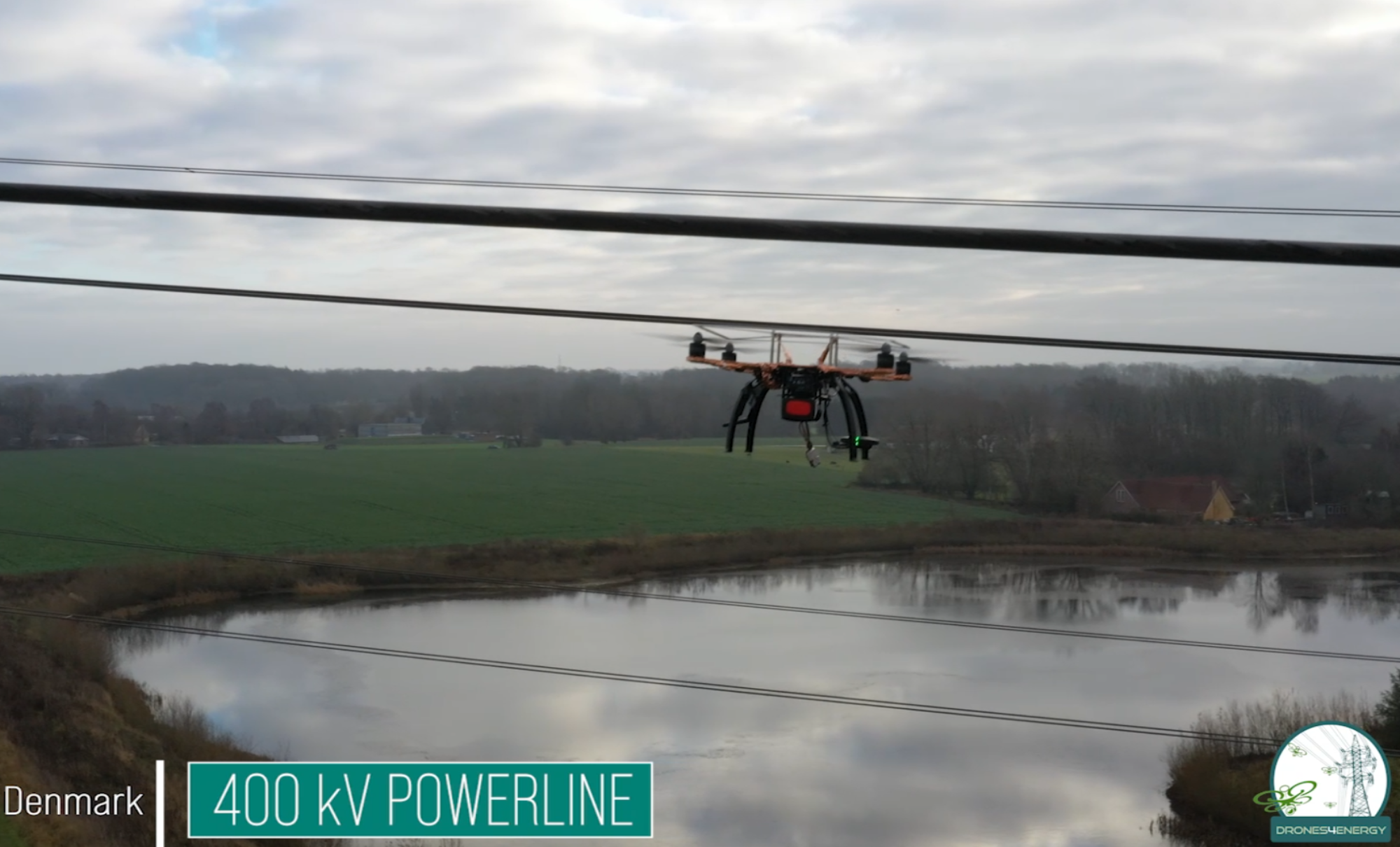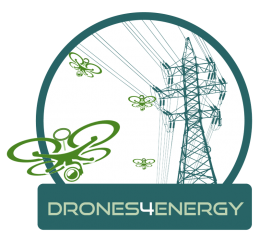The Drones4Energy project runs from December 2018 to May 2022 and is organised in 7 work packages.
WP1: Project Management, Dissemination, and Exploitation
Work Package Leader: SDU (UAS) – Start month Dec 2018, duration 42 months
Objectives:
- Overall management of the project and risk contingency planning
- Administrative responsibilities and coordination of the project
- New business models and business case evaluations
- Dissemination of knowledge and pre-standardization activities
- Establishment of a start-up company and licensing of project findings
WP2: Use case definitions and system design
Work Package Leader: GeoPartner Inspections – Start month Dec 2018, duration 6 months
Objectives:
- Specifications of three use cases to validate the developed Drones4Energy platform including flying conditions, legislations, and inspection requirements.
-
Definitions of the overall system architecture relevant to the hardware part (energy harvester, sensors, wireless links) and the software part (control algorithms, machine learning, and communication protocols).
-
Specifications of the system interfaces of the hardware and software parts of Drones4Energy platform.
WP3: Drone design and communications system
Work Package Leader: Aarhus University –Start month Jun 2019, duration 24 months
Objectives:
- Requirements and specifications of a collaborating drone system. Definition of test cases for validation.
- Design and implementation of a wireless base station/gateway for connecting inspection drones to the internet.
- Design and implementation of a wireless communication module for a collaborating inspection drone.
- Design and implementation of communication protocols for inter-drone communication. Design of algorithms for collaborating drones for inspection applications.
- Test and validation of the communication infrastructure for the drone system based on test case definition
WP4: Harvesting and sensors
Work Package Leader: Fraunhofer – Start month Jun 2019, duration 24 months
Objectives:
- First, the requirements regarding overhead line regulations will be checked. Safety and mounting conditions are subject to this investigation. Together with the general requirements, a detailed specification will be derived.
- The known variants for energy harvesting from overhead lines will be investigated by simulation and test setup to verify the principle and the material selection. The results will flow in the concept design of the harvester.
- Within this task, the harvester module will be realized from the electronics side.
- The high current test is of great importance for the proof of concept. The circuitry has to withstand also high currents than nominal values due to spikes and discharge effects on the line. This test will be done at special labs from third parties.
- For the approach of a drone at a line, a mechanical design and assembly have to be performed that fulfills not only the functional but also the safety requirements.
- Testing of the usability requirements together with optimization will be performed.
- For the inspection as well as the landing process the quality of sensors is important. This task investigates the use of Lidar and infrared-Image sensors to optimize these processes and gives a concept of integration of these sensors.
WP5: Autonomous drones algorithms, controlling and data analyzing
Work Package Leader: SDU(IMADA) – Start month Dec 2018, duration 30 months
- Schedules for automated drone inspections are to be computed based on inspection demands and constraints, geodata, weather forecasts, and physical parameters of the drones (flying time, charging time, flying speed etc). Based on these schedules navigational instructions for the drones will be communicated.
- Flight data from the drone is to be collected, transferred, stored, analyzed, and visualized – both for control, maintenance, and system improvement purposes. Inspection data is to be pre-processed on the drone in order to minimize the amount of bandwidth of the WAN network consumed.
- The pre-processed inspection images stored in the cloud infrastructure are to be classified using state-of-the-art machine learning techniques. The plan is to rely on deep convolutional neural networks.
WP6: System integration
Work Package Leader: SDU(UAS) – Start month Dec 2020, duration 11 months
- Integration of the lightweight energy harvester with the drone’s flight controller unit and battery system.
- Integration of the LoRaWAN and the communication protocols with the drone’s communication system.
- Integration of software interfaces of the developed algorithms and the drone’s computing unit.
WP7: Testbed establishment, validation, and demonstration
Work Package Leader:SDU(UAS) – Start month Dec 2021, duration 6 months
- Live testing of the energy harvesting technique over an active power line cable.
- Live testing of the coordination system of a set of drones.
- Live testing of the autonomous mission system and data optimization algorithms.

